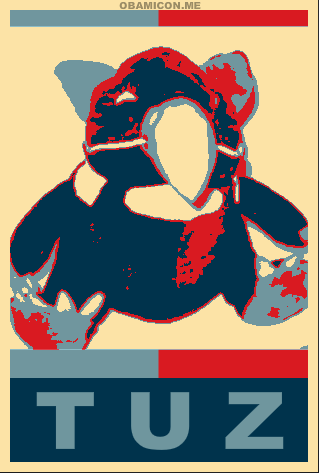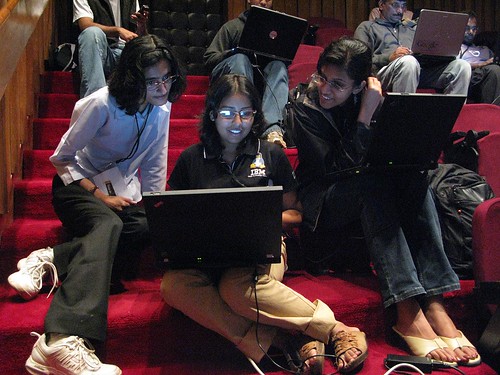FOSS.IN has certainly changed a lot since I first attended in 2005, where there were several thousand delegates, an expansive talks programme, and a significant commercial presence with a dedicated trade hall. Since then, and particularly following this year’s omlette post, the organizers have been nudging the conference toward an increasingly technical and participatory event.
This year, somewhat following the example of the Plumbers Conference, the core of FOSS.IN became workout sessions, with fewer traditional conference talks. The aim, according to the organisers, is to provide Indian developers with access to a dedicated technical event similar to the experiences available to FOSS developers in North America and Europe.
Approximately a thousand delegates registered, although I’d estimate that there were typically around three to five hundred people present during the course of the conference. One of the organizers noted that in previous years, the crowd of delegates would change from day to day, reflecting each days programming, but that this year, the crowd was essentially the same throughout.
While there were several standalone talks, this was not an event aimed at a passive audience. From my observations, the main action was found in active participation in workout sessions, BoFs, and ad-hoc hacking gatherings. It seemed that wherever there was a power outlet, you’d find a small group of people gathered with laptops, working on something.
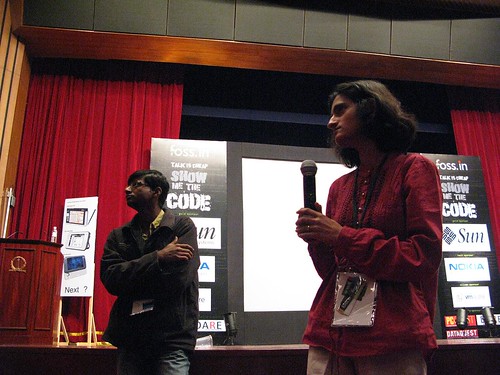
There was a major KDE presence at the conference, although most of my time was spent involved in kernel-related events. I heard that a KDE theme song was composed, performed and recorded at the conference, so I wonder if this may be the first FOSS conf to create and ship a conventional work of art.
Around two weeks before the conference started, the organizers allocated a day to a then yet-to-be-defined Linux Kernel Hacker Gathering, asking kernel folk to “organize something”. Several emails later, with a growing cc: list and finally a small mailing list set up by Harald, a basic outline was determined. A planning meeting was organized for the Monday before the conference at the IBM Bangalore campus. Details of the Kernel Workout were also finalized there.
The LKHG event started on Friday with a series of talks on various kernel topics by upstream developers, then opened up for a series of lightning talks from delegates, and finished with an open discussion. There weren’t as many lightning talks as were hoped for, which was not unreasonable given the excessively short lead-time for the CfP. For this to work better in the future, I’d suggest having a much longer lead-time, and more publicity aimed specifically at kernel developers working outside of the upstream process, to engage such folk with the wider community. There were still some very good discussions around the relatively few lightning talks, in any case.
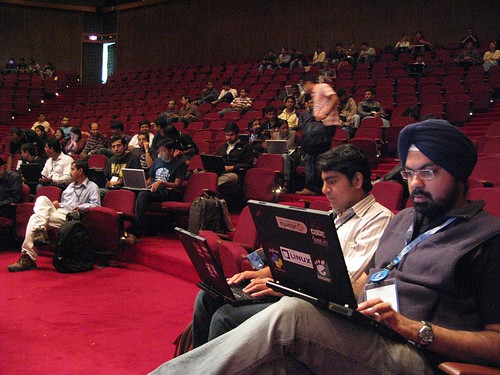
The kernel workout session was then held the following and final day. It appeared to succeed beyond expectations, largely due to the planning which happened in the few available days beforehand. Getting the word out on the prerequisites was critical. In this case, to participate, you had to be ready to hit the ground running with an already checked-out source tree on your laptop, which you knew how to build and run. Following that, it was a matter of choosing something from the set of tasks selected by the organizers, and asking for help from mentors if needed. There was also a preparatory session before the workout for people to get set up, although I missed that as I was giving a different talk at the time. Many of the major upstream Indian kernel hackers were there as mentors, so it was definitely the place to be to really get into things.
The results of the workout have been published on the workout wiki. As of writing, several patches from the workout have now been accepted into the kernel. Some were already posted and receiving review before the end of the workout.
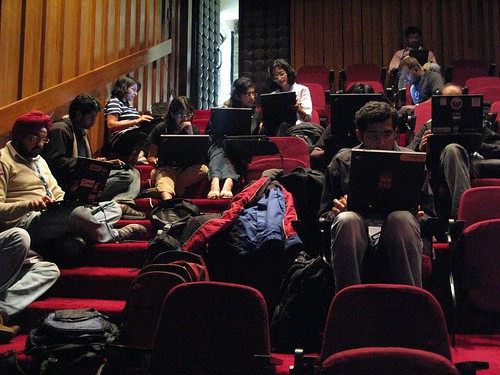
Earlier that day, I gave a talk on Fedora Kiosk Mode. It’s useful now to have a high-level application such as this to demonstrate an application of modern MAC security. Thus far, it’s been difficult to communicate the benefits of generalized MAC in theoretical terms. It’s clear from the example of Kiosk Mode that MAC does not need to be complicated if abstracted correctly, and that it can provide desirable and useful benefits to everyday users. There’s a lot more to come in this area, too.
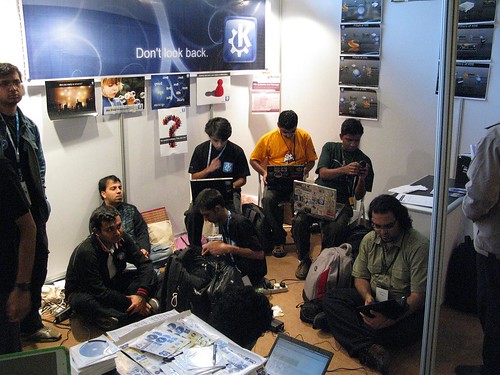
A particular highlight of the conference was the closing keynote by Kalyan Varma, which turned out to be probably the best talk I’ve ever seen on any topic. I knew it was something to do with photography, but I had no idea what was in store: a linking of ideas as diverse as FOSS community principles; amusing security hacking demonstrations; photographing new species; having your work exhibited at the London School of Economics; working with the BBC and David Attenborough; getting a cheque from the makers of Snakes on a Plane for using one of your Creative Commons flickr photos; and what this all has to do with drinking tea and saving the environment. Harald has also written about the talk. I hope the video of the talk is published online soon, and I really wouldn’t be surprised to see Kalyan presenting it at TED.

Overall, I greatly enjoyed the conference, and feel that I’d generally prefer to attend these kinds of working conferences in the future. Given the overheads involved in travel (productivity hits in particular), the traditional “famous people get up and talk about how great they are” talk-based conferences are decreasingly compelling. It’s great to meet up with folk I’ve been working with online, but even greater to do so in the context of getting useful development-related tasks done.
A huge thanks to the team for letting me be part of this amazing event. There was certainly no shortage of challenges for them this year, and they ensured that everyone who put something into the conference got a lot more back out.
